Warning System for Aviation Exposure to Solar Energetic Particles (WASAVIES)
November 7, 2019
National Institute of Information and Communications Technology
Japan Atomic Energy Agency
National Institute of Polar Research
Hiroshima University
National Institute of Technology, Ibaraki College
Nagoya University
Highlights
- Develop a system to estimate radiation dose due to solar energetic particles in real-time
- Possible dose estimation up to 100 km above a ground at anywhere in the Earth
- Provide ICAO a mandatory information for cosmic ray radiation protection management of aircrews
Background
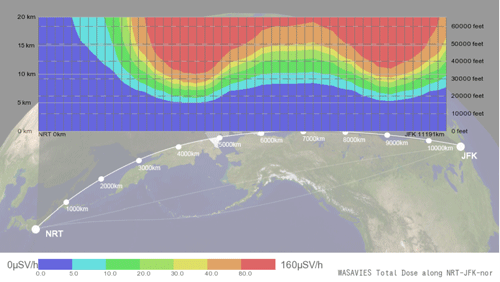
Achievements
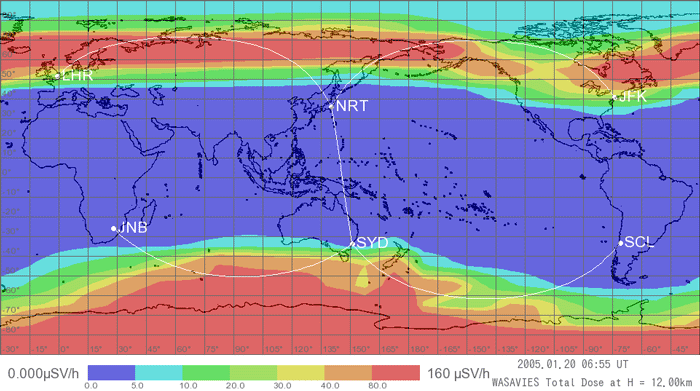
White lines show flight routes, along which the WASAVIES can specifically estimate the radiation dose.
Future Prospects
Role of each organization
- NICT: Development of SEP transport simulation. Development and operation of WASAVIES website.
- JAEA: Development of air shower simulation. Integration of all simulations.
- NIPR: Development of SEP transport in the magnetosphere.
- Hiroshima Univ.: Development of real-time event detection algorithm.
- Ibaraki College: Improvement of SEP transport simulation in magnetosphere.
- Nagoya Univ.: Performance assessment of the system.
Article information
Appendix
WASAVIES
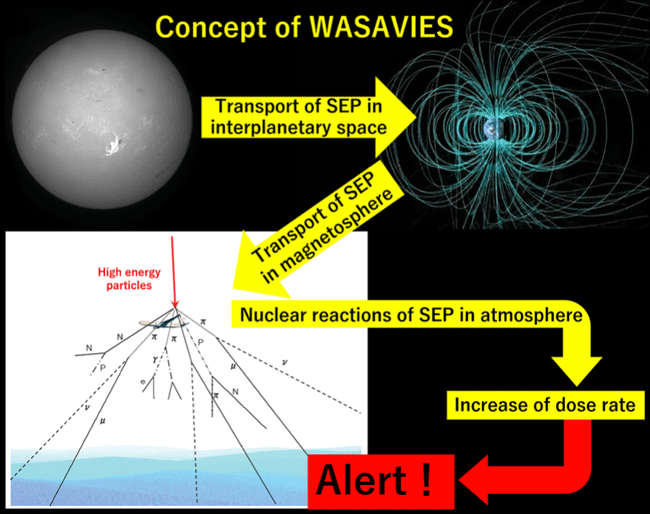
WASAVIES website
https://wasavies.nict.go.jp/index_e.html
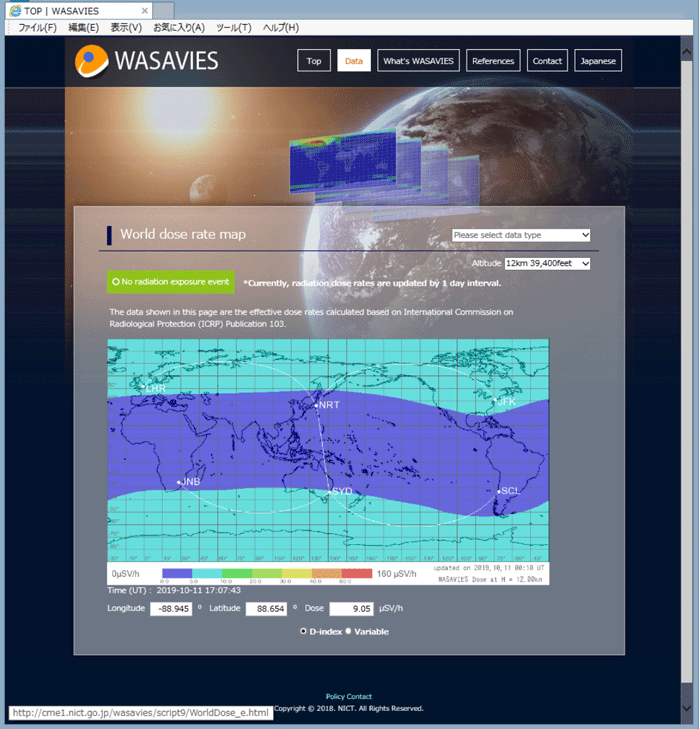
Glossary
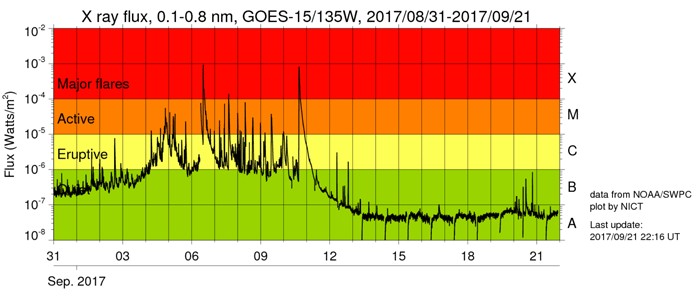
Slight increase of radiation dose occurred during a solar flare on 10 September 2017 (UTC).
Technical Contact
Yûki Kubo, Daikou Shiota
Space Environment Laboratory
Applied Electromagnetic Research Institute
NICT
Tel: +81-42-327-6893
E-mail:






















Media Contact
Sachiko Hirota
Press Office
Public Relations Department
NICT
Tel: +81-42-327-6923
E-mail:





















